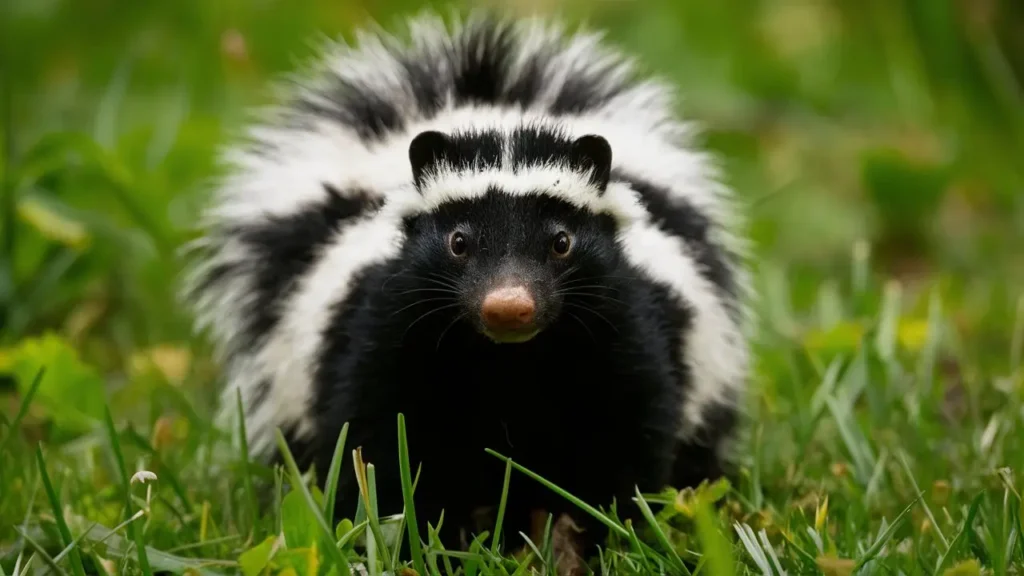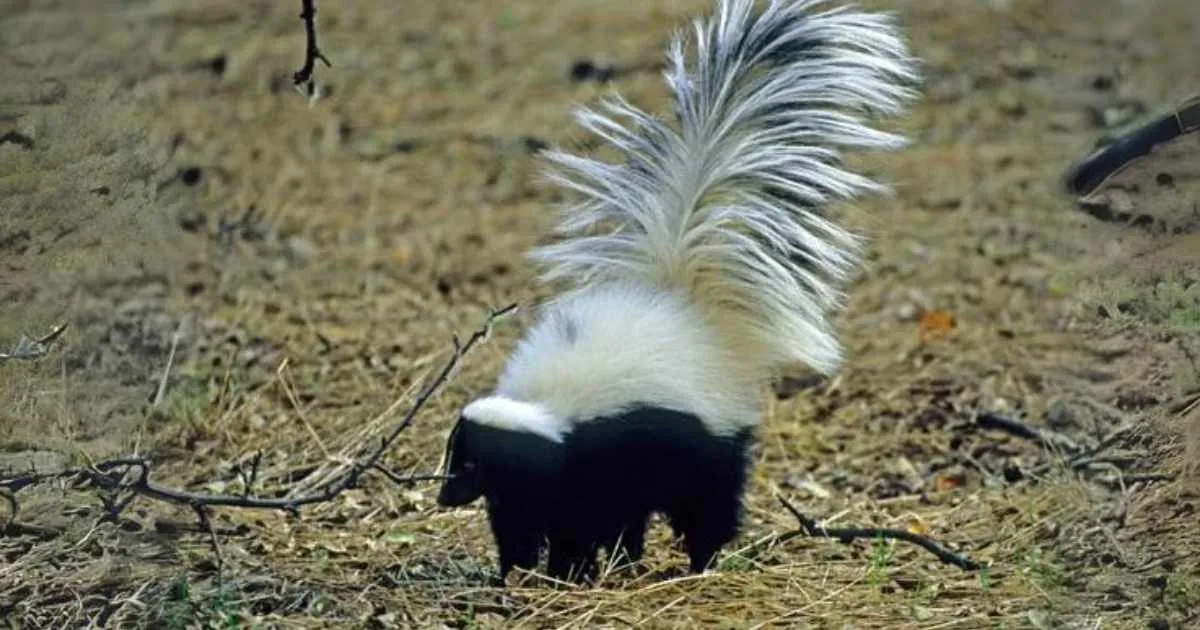The Hooded Skunk (Mephitis macroura): A Comprehensive Overview
Last updated on December 6th, 2024 at 11:20 pm
The Hooded Skunk is a captivating mammal recognized for its striking appearance and noteworthy behaviors. From its distinctive “hood” of fur to its versatile diet, this species plays an essential role in various ecosystems across North and Central America. Gaining insight into the Hooded Skunk’s ecology, diet, and conservation status helps us appreciate the complexity and importance of this nocturnal wanderer.
Introduction
Scientific Name: Mephitis macroura
Range: Southwestern United States, Mexico, and parts of Central America
Key Features: Long, dense mane (or “hood”) of white fur, potent defensive spray, omnivorous diet
The Hooded Skunk differs from its more familiar relative, the Striped Skunk, most notably by its longer, narrower hood of fur and certain aspects of coloration. Understanding its behavior, dietary habits, and environmental needs is crucial for wildlife enthusiasts, researchers, and those managing human-wildlife interactions.
Physical Characteristics
Coloration and “Hood”
Hooded Skunks typically display contrasting black and white fur. While individual patterns vary, many have a distinctive white “hood” of fur around the neck and a white stripe that can extend down the back. Unlike the Striped Skunk, the Hooded Skunk often appears to have a more pronounced, elongated patch of white fur, giving it a unique silhouette. This ruff of fur can be fluffed out when threatened, enhancing the skunk’s apparent size.
Size and Weight
Hooded Skunks are medium-sized mammals. Adults generally weigh between 700 grams to 3 kilograms (1.5 to 6.6 pounds). Their body length (excluding the tail) measures about 30 to 35 centimeters (12 to 14 inches). The tail adds another 25 to 40 centimeters (10 to 16 inches), often appearing bushy and conspicuous. While not large, their balanced build and agile form allow them to navigate diverse terrains.
Habitat and Distribution
Geographic Range: Hooded Skunks inhabit a broad range extending from the Southwestern United States (in states like Arizona, New Mexico, and Texas), through most of Mexico, and into parts of Central America.
Environments Occupied:
- Deserts: They manage to thrive in arid conditions, using vegetation and burrows for shelter.
- Grasslands: Open areas provide opportunities to hunt for insects and small vertebrates.
- Woodlands: Tree-rich habitats offer cover, nesting sites, and fruiting plants.
- Suburban Areas: Occasionally, they venture near human settlements where food sources (insects, fruit, and refuse) can be found, though they generally prefer natural landscapes.
Their adaptability to various habitats is key to their wide distribution. Hooded Skunks occupy elevations ranging from lowlands to higher, cooler regions, as long as there is sufficient cover and food.

Behavior and Diet
Nocturnal Activity
Hooded Skunks are primarily nocturnal. They spend daylight hours resting in dens (often burrows) and become active after dusk. Darkness provides safety from predators and cooler temperatures in hotter regions. During the night, they forage, socialize (infrequently), and carry out mating activities in the appropriate season.
Omnivorous Diet
These skunks are opportunistic feeders with a broad diet. Their meals commonly include:
- Insects: Beetles, crickets, and grasshoppers form a major part of their protein intake.
- Small Vertebrates: Rodents, amphibians, and the occasional reptile or bird’s egg supplement their diet.
- Plant Matter: Fruits, berries, and other plant materials offer essential nutrients and moisture, balancing their omnivorous intake.
This dietary flexibility helps Hooded Skunks survive in environments where food availability fluctuates seasonally.
Defense Mechanisms
Like other skunks, Hooded Skunks possess specialized scent glands near their tail. When threatened, they can accurately spray a foul-smelling, sulfur-based chemical up to several meters. This spray can deter predators such as coyotes and foxes, giving the Hooded Skunk ample time to retreat. Prior to spraying, skunks often give warning signs like raised tails, stamping, or hissing to deter confrontations.
Reproduction
Mating Season and Courtship
Mating typically occurs in early spring. Males may roam more extensively, seeking receptive females. Courtship involves scent marking and vocalizations. Once the male successfully mates, both adults go their separate ways.
Gestation, Birth, and Offspring Care
- Gestation Period: Approximately 60 days
- Litters: Typically contain 2 to 10 kits
- Birth Timing: Late spring to early summer
Kits are born blind and helpless, relying solely on their mother’s milk and protection. After a few weeks, they begin to explore outside the den, learning foraging skills and, eventually, how to use their signature defense spray. By the end of summer, kits often become independent, ready to establish territories of their own.
Threats and Conservation
Challenges Faced
Hooded Skunks are not currently considered endangered, but they face challenges common to many wildlife species:
- Habitat Loss: Urban and agricultural expansion reduces available habitat.
- Hunting and Trapping: While not heavily targeted, they can become victims of indiscriminate trapping or hunting for fur.
- Human-Wildlife Conflicts: As they occasionally enter suburban areas, issues arise over property damage or the presence of skunks near homes.
Conservation Measures
Efforts to help Hooded Skunks thrive include:
- Habitat Protection: Preserving natural landscapes and maintaining corridors that connect wild areas.
- Regulations and Education: Informing the public about coexisting with skunks and adhering to wildlife protection laws.
- Research: Ongoing studies on skunk behavior and ecology inform management strategies and promote effective human-skunk coexistence.
Interaction with Humans
Hooded Skunks sometimes venture into human-inhabited areas, feeding on insects, rodents, and occasionally garden produce. While their presence might concern homeowners due to the risk of spraying, these skunks also provide benefits by controlling pests. With proper precautions—such as securing garbage cans, removing outdoor pet food, and sealing entry points under decks—coexistence is usually possible.
Skunks as Pets: In some places, keeping a de-scented skunk as a pet is legal, though the Hooded Skunk is less commonly domesticated than other species. Potential owners must understand that these are still wild animals requiring specialized care, diets, and veterinary attention.
Frequently Asked Questions
Q: How is a Hooded Skunk different from a Striped Skunk?
A: The Hooded Skunk typically has a longer, narrower “hood” of white fur around its neck and can have varying amounts of white along the back. The Striped Skunk generally has more distinct, well-defined stripes and a notably fluffier tail.
Q: Do Hooded Skunks spray like other skunks?
A: Yes, they have scent glands and can spray a pungent odor when threatened. Their spray is a highly effective defense mechanism.
Q: What is the difference between Hooded and Hog-nosed Skunks?
A: The Hog-nosed Skunk (Conepatus species) has a distinct pig-like snout and slightly different gland secretions. The Hooded Skunk is defined by its “hood” of fur and narrower head stripe patterns.
Conclusion
The Hooded Skunk stands as a remarkable example of nature’s adaptability and diversity. Its distinctive hood, omnivorous diet, nocturnal lifestyle, and potent defensive abilities underscore its role in maintaining ecological balance. By controlling insect populations, dispersing seeds, and participating in food webs, Hooded Skunks subtly influence the health and stability of their habitats. Understanding these creatures and their environment fosters better coexistence, ensuring that both wildlife and human communities continue to flourish.

